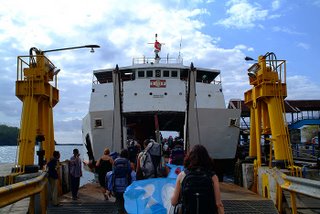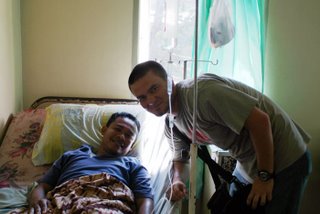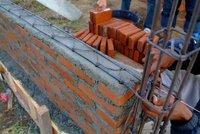Gili Meno, Lombok, Indonesia
 Leaving Banda Aceh for the final time. Sad.
Leaving Banda Aceh for the final time. Sad.I arrived in Bali that evening. It's takes a full day to get here from Banda Aceh by plane, which is the northern most point in Indonesia, to Bali, four hours to the southeast. Added to the time, I had two layovers on the way, Medan and Jakarta.
I spent the night in Bali's famous Kuta Beach, which is right next the airport and is where the whole Bali tourism started. Kuta Beach is also the scene of the horrific "Bali Bombings" of 2002 where two bombs (one in a backpack inside a nightclub and the other in a car just outside) causing a blast and fire ball that ripped through two packed night clubs and into the crowed street at a peak hour on a Saturday night killing over 200 people, most of them being Australians and Indonesians. It's a sad story, they think many more Indonesians were killed but were unaccounted for since a lot of the severely injured, not knowing what to do made their way back to their home villages around Bali and Java and ended up dieing there from a lack of medical treatment. The Australians and other foreigners were flown to hospitals in nearby Darwin, Australia by the Royal Australian Air Force.
Today, Kuta Beach has moved on, but hasn't forgotten. The strip along the beach is nothing but hotels, resorts, malls, surfer bars, sushi bars, karaoke bars all alive with Australian Surfers (which almost make up half of the foreigners here) and Japanese, French, Dutch and British tourists (and me).
 The following morning, real early, I got on a backpacker shuttle bus to east Bali to catch a ferry for the long five hour crossing to Lombok. Here I am packing on the ferry with the other people in my group.
The following morning, real early, I got on a backpacker shuttle bus to east Bali to catch a ferry for the long five hour crossing to Lombok. Here I am packing on the ferry with the other people in my group. Crossing the Lombok Strait
Crossing the Lombok Strait On the ferry I met this Balinese, Heri, and his friend, Ridwan, from Lombok. I ended up talking to them for about four of the five hours. They were pretty cool, and he even knows how to play Linkin Park on the guitar.
On the ferry I met this Balinese, Heri, and his friend, Ridwan, from Lombok. I ended up talking to them for about four of the five hours. They were pretty cool, and he even knows how to play Linkin Park on the guitar.  This father, now and then, would entertain his kids, as they grow restless on the ship.
This father, now and then, would entertain his kids, as they grow restless on the ship. Lombok comes into view. As you can see, Lombok is more aired than Bali. What a difference a strait can make.
Lombok comes into view. As you can see, Lombok is more aired than Bali. What a difference a strait can make.So there is this line, called the
Wallace Line (after the 19th-century naturalist Sir Alfred Wallace) that is drawn right between Bali and Lombok. On the north-west side (Bali and beyond to mainland Asia) of this biological division, the flora and fauna is Asian. And on the south-east side (Lombok and beyond to Australia), it's Australian (eucalypt trees, acacias, etc.) Something about during the ice age, when the sea level was lower, animals (elephants, tigers etc. and I guess plants?) were able to walk from the Asian mainland all the way to Bali, but due to the deep Lombok Strait, it was still separated by water and couldn't cross over to Lombok and on to Australia. These differences they say are as great as the differences in flora and fauna between Africa and South America.
 Heading over a pass to northern Lombok
Heading over a pass to northern LombokAfter the long ferry crossing, I rode another shuttle bus for two hours up the Lombok coast (with the same group of people I left with in Kuta Beach). While on the shuttle bus, I met and ended up talking to an English girl, that looks like a young Kate Beckinsale. But what shocked me was when she told me she just finished her PhD in physics. Holy shit! A young Kate Beckinsale with a PhD in physics?! England, what a place! Though she said she doesn't know what she is going to do with the degree, so that's why she's traveling.
 For the final leg of my journey today, I rode a small boat to Gili Meno. Of course it was overloaded, and at times I thought it was going to capsize.
For the final leg of my journey today, I rode a small boat to Gili Meno. Of course it was overloaded, and at times I thought it was going to capsize.
 Not bad for Rp150,000 (US$16) a night.
Not bad for Rp150,000 (US$16) a night.



















































